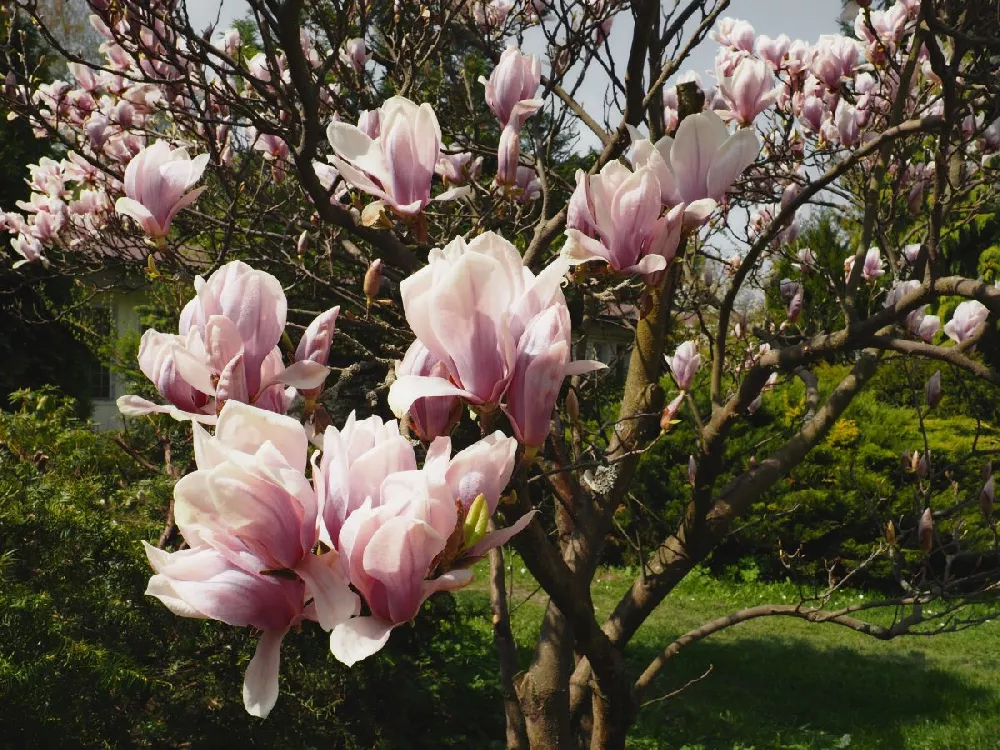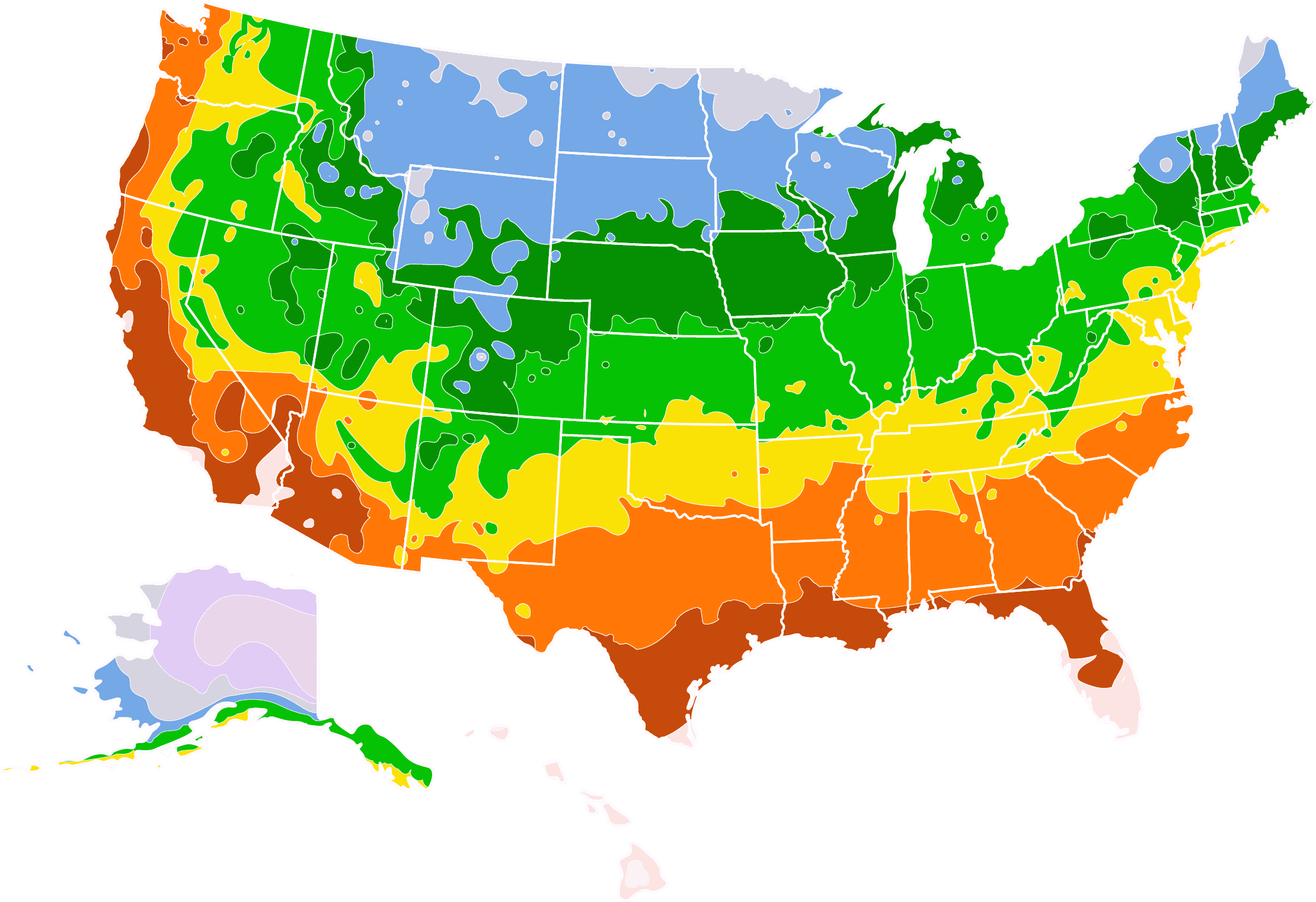- Home >
- Flowers >
- Trees and Plants with Pink Flowers >
- Saucer Magnolia Tree
Saucer Magnolia Tree for Sale - Buying & Growing Guide
The Saucer Magnolia Tree is one of the most popular magnolias in existence, and one look at this plant's large flowers will reveal the reason behind that popularity. The flowers of this crossbreed, Magnolia x soulangeana, appear early in the year with lovely pink and white hues. At times, those flowers may rebloom throughout the year. Along with being quite beautiful, the Saucer Magnolia tree comes with a straightforward care routine that makes it easy for any gardener to enjoy this fantastic ornamental tree.
- The flowers of the Saucer Magnolia Tree are large with shades of pink and white.
- The Saucer Magnolia Tree can rebloom throughout the growing season.
- This tree is surprisingly capable of adapting to heavy soils.
Enter your zip code to find nearby stores that may carry this plant.
Plant Care
Sunlight

A Saucer Magnolia Tree can survive some occasional shade but does best in full sunlight.
Watering
Water this plant about once or twice per week during the hottest months of the year.
Fertilizing

Apply a balanced, slow-release fertilizer to the soil once per year in early spring.
Planting instructions
There are cases in which a Saucer Magnolia Tree will survive in areas that receive some light shade. However, full sunlight will allow this plant to exhibit its best growth. The soil in your planting location should be deep, relatively moist, and somewhat acidic. To plant your Saucer Magnolia, begin by digging a hole that is as deep as the root ball is tall and about twice as wide. Water this plant while you backfill the hole, then cover the planting area with a layer of organic mulch.
Watering and nutrients
Your Saucer Magnolia Tree will need water on a consistent basis during its first year of growth. After that, this plant’s water needs will decline significantly. Typically, the only time that you’ll need to give water to an established Saucer Magnolia Tree is during the hottest months of summer, during which time you may need to water once or twice per week. It’s best to feed your Saucer Magnolia Tree with a balanced slow-release fertilizer once annually during the late winter or early spring.
Pollination
Saucer Magnolia trees, and other magnolia varieties, have a different pollination process than most other flowering plants. The magnolia genus evolved before many of the most common flying pollinator insects, like bees, butterflies and flies, which means that these plants cannot rely on them to conduct pollination. Instead, certain types of crawling beetles are responsible for conducting the pollen transfer for a magnolia tree. Also, since the Saucer Magnolia Tree is a self-fertile variety, a single plant is capable of pollinating itself successfully.
Pruning
You should avoid pruning your Saucer Magnolia Tree during the spring season. Pruning in early spring will likely cause you to remove the season’s flower buds, which appear on old wood. Spring pruning can also cause your Saucer Magnolia Tree to bleed a lot of sap. Plan your pruning for a time later in the growing season, such as late summer or fall, after your tree has finished flowering. At that time, you should perform light pruning to remove any dead, damaged or diseased parts of the plant.
Pests, diseases and animals
The sad reality of growing a Saucer Magnolia Tree is that this plant will likely encounter some form of infection or infestation during its life. The reason for this is that there are many pests and diseases that commonly afflict this plant. Scale insects and sap suckers are some of the most prevalent insects to harm a Saucer Magnolia. Additionally, diseases including blight, black mildew, dieback, canker and various forms of leaf spot may also be a threat to your Saucer Magnolia Tree.
Achieving maximum results
Along with the risk of pest infestations and diseases, cold weather is also a significant threat to your Saucer Magnolia Tree. Since this plant blooms early in the season with large petals, it is vulnerable to late winter storms and frost, which can damage the flowers and cause many of them to die before they have the chance to open in some cases. As such, it is often wisest to give your Saucer Magnolia some protection from cold and harsh winds to preserve the integrity of the blooms.
FAQs
How was the Saucer Magnolia Tree created?
Considering the many magnolia cultivation and hybridization efforts that have taken place over the years, there is a slight bit of confusion about how the Saucer Magnolia Tree came into being. However, it is most likely that the first version of this plant appeared in a garden in Fromont, France. That original Saucer Magnolia Tree arose via a cross between two other magnolias, which were Magnolia denudata and Magnolia liliiflora.
How large is the Saucer Magnolia Tree?
The Saucer Magnolia Tree can grow as a small to a mid-sized tree that reaches about 20 to 25 feet tall with a spread that matches that size. During the early years of this plant's life, it can often appear quite shrub-like. However, this plant has a relatively fast growth rate, about two feet per year, which allows it to develop into a more tree-like size in just a few seasons.
Why is it called a Saucer Magnolia?
The name “Saucer Magnolia” is a reference to the appearance of this plant's flowers. Those flowers open each spring and are quite large, with a shape that resembles a saucer or a cup. Each flower has six broad petals that have a slightly waxy texture. The petals tend to curve inwards around the flower's center, ultimately mimicking the look of a teacup sitting on a rounded saucer.
Compare Similar Products
You can't add more Product Name - Product size to the cart.
OK









